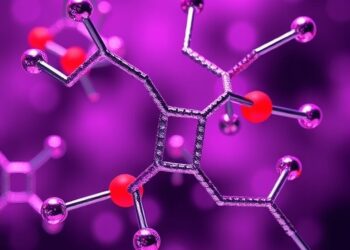The Science
Quantum chromodynamics (QCD) is the theoretical framework for studying the forces within atomic nuclei and their constituent protons and neutrons. A major part of QCD research involves how quarks and gluons are contained within nucleons (protons and neutrons). Mathematically, the forces inside nucleons can be compared to the force of gravity. However, quantum effects known as the “trace anomaly” that do not follow the same pattern can become prominent in nucleons. These quantum effects may be responsible for the balance between the outward pressure inside nucleons and the forces holding them together.
The Impact
Recent research has shown that the trace anomaly can be measured using the production of charmonium. This is a type of subatomic particle produced at the Thomas Jefferson National Laboratory and the future Electron Ion Collider. Researchers can also theoretically calculate the trace anomaly using QCD. Combining experimental measurements and theoretical calculations of the trace anomaly will provide insights into the mass and pressure distributions within hadrons. These are particles that consist of quarks and gluons. Researchers are now seeing similarities in the theories that describe these QCD calculations, superconductivity, and even how the universe expands.
Summary
New research has identified a common theme of energy and pressure that emerges across vastly different scales in physical systems. In both hadrons and superconductors, how particles are confined to a specific volume can be described with the same mathematical framework. This is also similar to the role of the cosmological constant or dark energy in regard to energy and pressure in the equations describing the expansion and acceleration of the Universe. These examples illustrate how the concepts of energy, pressure, and confinement manifest across different physical systems, from the microscopic to the cosmic scales, providing a unified understanding of diverse phenomena in physics.
Finally, researchers can measure the trace anomaly experimentally and calculate the anomaly in lattice QCD. This offers a direct means of probing and understanding the dynamics of quantum chromodynamics.
Funding
This work is partially supported by Department of Energy (DOE) and the TMD Topical Collaboration. The research used resources of the Oak Ridge Leadership Computing Facility at Oak Ridge National Laboratory, as well as Stampede time under the Extreme Science and Engineering Discovery Environment (XSEDE) supported by National Science Foundation. The researchers also thank the National Energy Research Scientific Computing Center (NERSC) for providing high performance computing resources and acknowledge the facilities of the USQCD Collaboration funded in part by the DOE Office of Science.




